Where to dig in?
You’ll want the best soil for indoor plants that’s lightweight, well-draining, and maintains pH levels between 6-7 for ideal growth. Look for potting mixes containing organic matter like coconut coir or compost, plus drainage materials such as perlite or pine bark. Choose organic blends for long-term plant health and microbial activity, or non-organic options for faster growth and cost savings. Quality brands like Miracle-Gro and Good Dirt offer specialized formulations that prevent root rot while providing essential nutrients your plants need to thrive indoors.
Essential Characteristics Every Indoor Plant Soil Must Have

When you select soil for your indoor plants, you’re making one of the most important decisions for their long-term health and growth. The right soil provides everything your plants need to thrive indoors, while poor soil can stunt growth or even kill your plants.
Your ideal indoor plant soil must have five essential characteristics. First, it needs to be lightweight and well-aerated to promote strong root growth and prevent compaction. Second, it should balance moisture retention with proper drainage, keeping roots hydrated without drowning them. Third, maintain consistent pH levels between 6-7 for ideal nutrient absorption. Fourth, choose sterilized soil that’s free from pests, diseases, and harmful pathogens. Additionally, incorporating components like sphagnum peat moss and perlite ensures the mix is optimized for drainage and aeration. Finally, guarantee it’s rich in nutrients and organic matter to feed your plants naturally throughout their growing season.
Remember that what you’re actually buying is a potting mix rather than true soil from the ground, as these artificial mediums are specifically formulated to meet the unique needs of container plants.
Key Ingredients That Make Quality Potting Mixes

Understanding these five characteristics helps you evaluate any potting mix, but knowing what specific ingredients create these qualities will make you a smarter shopper.
Quality potting mixes combine specific components that work together. You’ll find organic matter like coconut coir or peat moss for moisture retention, plus drainage materials such as perlite or vermiculite. These ingredients create the perfect balance your plants need. Additionally, incorporating elements such as ZZ plants, known for their adaptability and low care requirements, can enhance the aesthetic and functional quality of your indoor garden.
| Organic Matter | Drainage/Aeration | pH Balance |
|---|---|---|
| Coconut Coir | Perlite | Limestone |
| Compost | Pine Bark | Dolomitic Limestone |
| Biochar | Leca Clay | Calcium Carbonate |
Look for mixes containing 40-60% organic matter, 20-30% drainage materials, and pH stabilizers. Avoid mixes with garden soil, which compacts in containers. Premium blends often include endomycorrhizal fungi, which boost root health naturally. For sustainable alternatives, consider coconut coir which comes in lightweight compressed blocks and serves as an eco-friendly replacement for traditional peat moss.
Soil Amendments to Enhance Your Plant’s Growing Medium
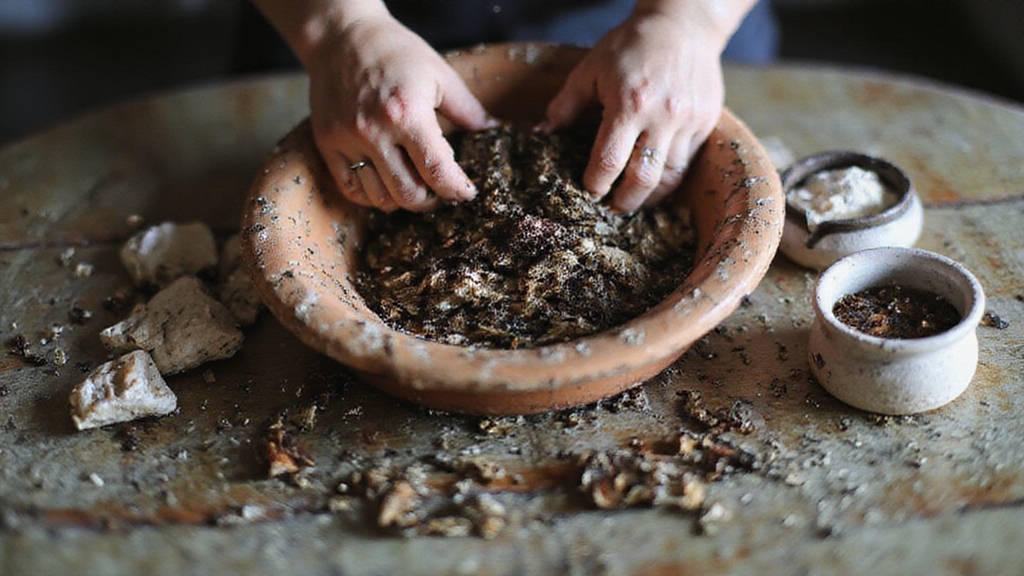
Three simple amendments can transform ordinary potting mix into a thriving environment that meets your specific plant’s needs.
Transform basic potting soil into the perfect growing medium with just three strategic amendments tailored to your plants.
Essential Amendments for Every Plant Parent
Perlite improves drainage while preventing soil compaction, making it perfect for succulents and cacti. You’ll mix more perlite into your soil when plants need excellent drainage.
Coco coir retains moisture without becoming waterlogged, and it’s completely pH-neutral. This sustainable amendment works beautifully for ferns, tropicals, and moisture-loving plants.
Compost or worm castings provide slow-release nutrients while boosting beneficial microbial activity in your soil. Choose high-quality compost like the Green Johanna 330 Litre Hot Composter, known for its versatile waste processing capabilities.
Application Guidelines
Mix amendments during repotting for best results. Use specific ratios based on your plant’s requirements—more drainage materials for desert plants, more moisture-retaining amendments for tropical varieties. Always research your specific plant’s needs before amending soil. Repotting can shock plants, so allow several weeks for your plants to adjust to their new growing medium.
Organic Vs Non-Organic Soil Mixes: Which Is Right for You
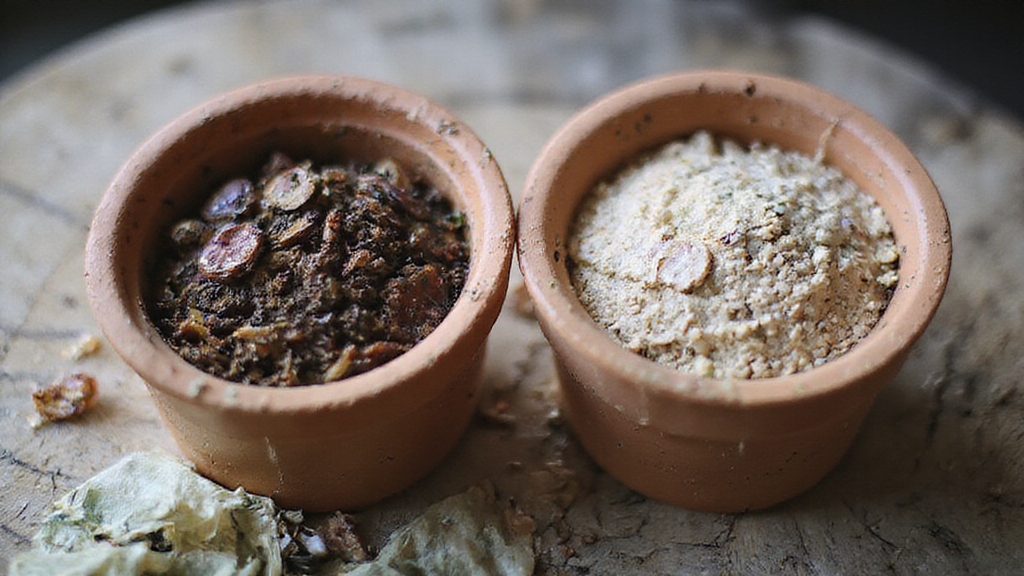
Although many new plant parents assume all potting soil works the same way, the choice between organic and non-organic mixes will drastically impact your plant’s health, growth patterns, and your gardening experience.
Understanding Organic Soil Mixes
Organic mixes contain natural materials like compost, bat droppings, and vegetable matter. They’ll release nutrients slowly, supporting your plants’ long-term health while promoting beneficial microbial activity. You’ll notice excellent moisture retention without waterlogging, and they’re environmentally sustainable. These mixes support soil microorganisms like bacteria and fungi that naturally break down organic matter to feed your plants. Organic mixes are often likened to loamy soil in their balanced composition, providing excellent drainage and moisture retention.
Non-Organic Mix Benefits
Non-organic mixes include synthetic fertilizers that deliver nutrients immediately, resulting in faster growth rates. They’re typically less expensive and widely available, making them budget-friendly options.
Making Your Decision
Choose organic if you prioritize sustainability, long-term plant health, and soil structure. Select non-organic for quick results, immediate nutrient availability, and cost-effectiveness.
Top-Rated Indoor Potting Soils and Their Unique Features
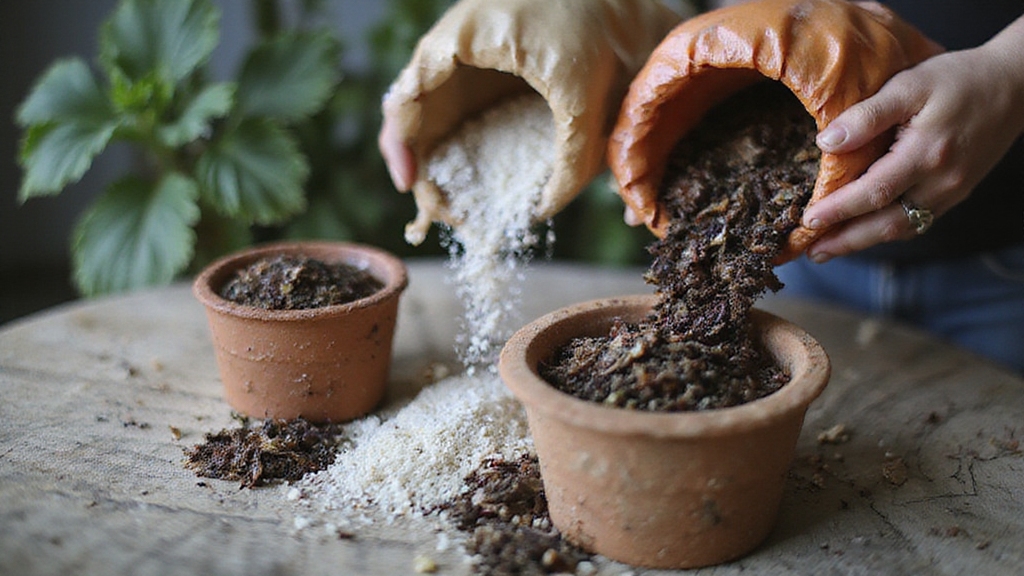
For moisture management, Miracle-Gro Moisture Control Potting Mix prevents overwatering issues common in indoor environments.
Good Dirt Indoor Potting Soil Mix delivers specialized indoor plant care with optimized moisture control. It is important for gardeners to refer to established resources, such as Rodale’s Basic Organic Gardening, when integrating organic practices into their indoor plant care routines.
PittMoss Plentiful Organic Potting Mix stands out for sustainability, using recycled paper instead of peat moss while maintaining excellent growing conditions. Fast germination makes PittMoss particularly effective for starting seeds indoors. Each soil addresses specific indoor gardening challenges through carefully selected ingredients.
How to Select the Perfect Soil for Your Specific Plants
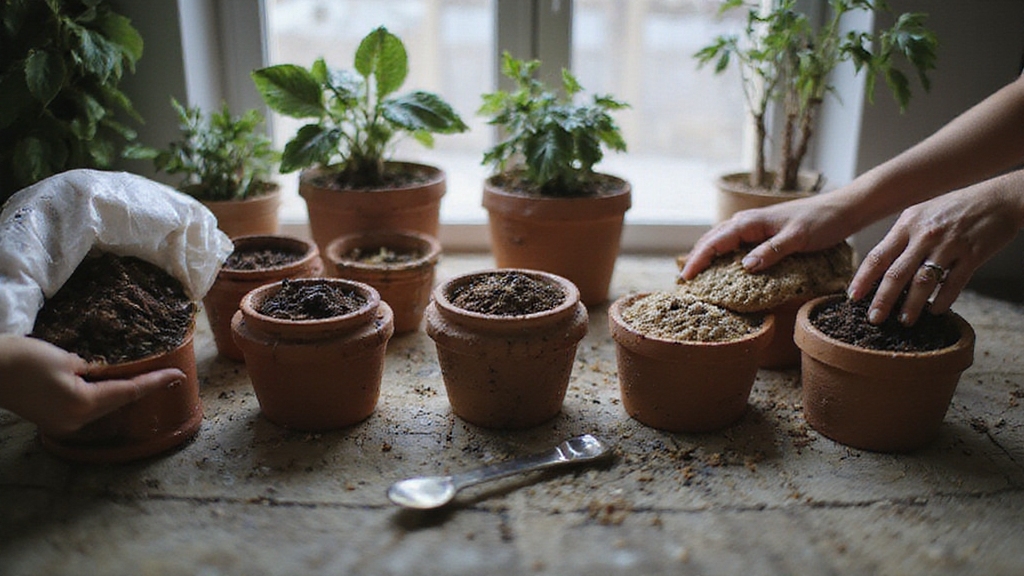
Selecting the right soil for your indoor plants starts with understanding each plant’s unique origins and natural growing conditions. You’ll need to match your soil mix to where your plant naturally thrives in the wild.
Consider these key factors when choosing soil:
- Plant origin – Desert plants need sandy, well-draining mixes while rainforest plants prefer moisture-retentive blends
- Root structure – Aroids like pothos require aerated mixes with perlite, while ferns need acidic bark additions
- Moisture needs – Succulents demand minimal water retention, but African violets thrive with balanced moisture
- pH requirements – Most houseplants prefer slightly acidic to neutral soil between 6.0-7.0. Many indoor plants, such as philodendrons and ZZ plants, also have air-purifying qualities that can benefit from optimal growing conditions.
You’ll create healthier plants by selecting ingredients like peat moss for moisture retention, perlite for drainage, and coco coir for sustainability. Avoid using outdoor dirt indoors, as soil-less potting mixes provide better aeration and drainage for container plants.
Best Practices for Using and Maintaining Indoor Plant Soil
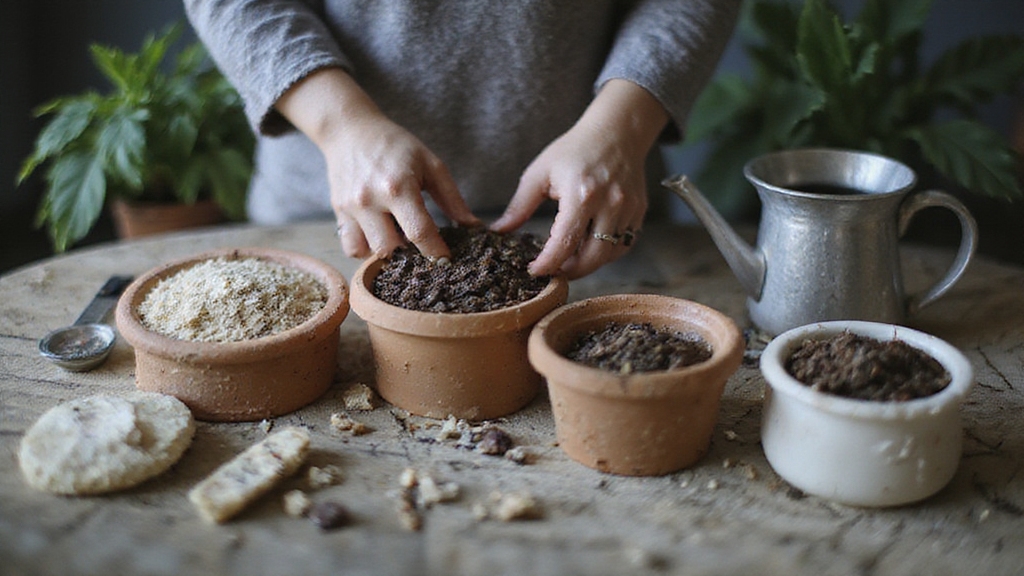
Proper Soil Setup
Start with high-quality potting soil designed for indoor plants, filling containers with fresh mix while avoiding garden soil. Guarantee your pots have drainage holes, and don’t pack soil too tightly—roots need air circulation. Look for potting soil that contains perlite or pumice for better drainage. Specialized tools like a precise trowel can help in distributing soil evenly and ensuring it is not overly compacted.
Smart Watering Methods
Water thoroughly until excess flows out, then let soil dry before watering again. Test moisture by inserting your finger one inch deep. Use room-temperature water, and always empty saucers to prevent root rot.
Regular Maintenance Tasks
Fertilize only during spring and summer using indoor plant fertilizer. Inspect soil regularly for compaction, remove surface debris, and repot annually in spring. Monitor for pests while maintaining stable indoor temperatures for ideal soil performance.
Frequently Asked Questions
Can I Reuse Old Potting Soil From Dead or Diseased Plants?
You can reuse old potting soil from dead or diseased plants, but you’ll need to sterilize it first. Remove plant debris, then use solarization by covering moist soil with clear plastic for 4-6 weeks in hot weather.
Alternatively, bake soil at 180°F for 30 minutes. Add fresh compost to replenish nutrients, fluff the soil for better drainage, and test pH levels before replanting.
How Long Does Bagged Potting Soil Last Before It Expires?
Unopened bagged potting soil typically lasts 1-2 years when stored properly in cool, dry conditions.
Once you open the bag, you’ll want to use it within 6-12 months for best results. After this time, nutrients start breaking down substantially, and the soil’s effectiveness diminishes. You can still use older soil, but you’ll need to add fresh fertilizer and organic matter to restore its quality.
Should I Sterilize Potting Soil Before Using It for Seedlings?
You should sterilize potting soil for seedlings if you’re using garden soil or questionable bagged mix.
Fresh, high-quality potting soil from reputable brands doesn’t need sterilization.
If you choose to sterilize, use gentle heat treatment or pasteurization rather than full sterilization to preserve beneficial microbes. This prevents damping-off disease while maintaining soil health for strong seedling growth.
Can I Mix Different Brands of Potting Soil Together Safely?
You can mix different potting soil brands together, but you’ll need to take precautions. Choose soils with similar compositions and pH levels to avoid plant stress. Test the pH after mixing, and blend small amounts gradually while monitoring your plants’ responses. Add compost to improve the mixture’s structure and nutrients.
This approach helps prevent drainage issues and maintains healthy growing conditions.
What’s the Difference Between Potting Soil and Potting Mix?
Potting soil often contains actual soil and is denser, making it better for outdoor plants and landscaping.
Potting mix is completely soilless, containing peat moss, perlite, and organic matter. It’s sterile, lighter, and provides better drainage and aeration for container plants. You’ll want potting mix for indoor plants since it reduces pathogen risk and offers superior moisture balance.
Replace potting mix every six to eight months.
Conclusion
You’ve got all the tools you need to choose excellent soil for your indoor plants. Start by checking drainage, nutrients, and pH levels when you’re shopping. Pick organic or synthetic mixes based on your plants’ specific needs. Remember to refresh your soil every one to two years, and don’t forget to add amendments when necessary. Your plants will thrive with the right growing medium.
